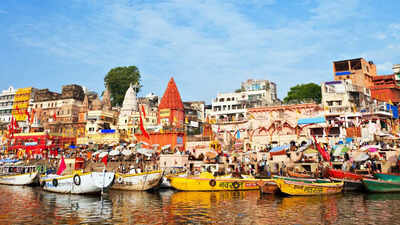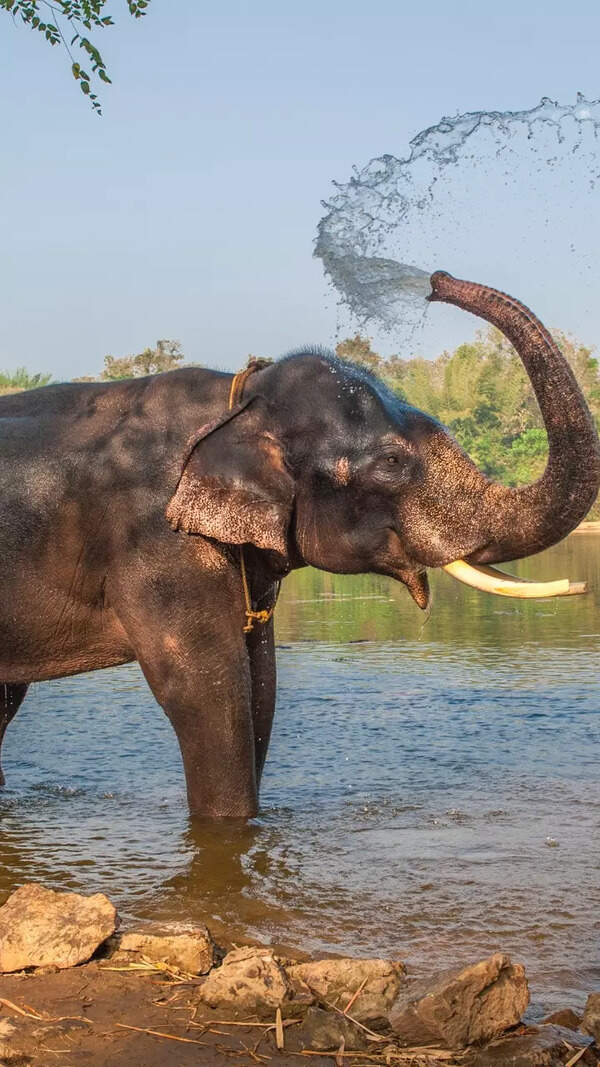Trending
Unbelievable! Ganga jal was put under a microscope and this is what came to light
A viral video claims Ganga water's purity. Ashu Ghai's video shows microscopic examination and lab tests of Gangajal from Haridwar revealing no impurities or microorganisms, even after culturing. This contradicts reports deeming Ganga water unfit for drinking, while aligning with an IIT-Kanpur study finding certain stretches potable.
Have you wondered why the Ganga water or Ganga Jal as we call it, does not get spoilt for months? Can there be some sacred reason behind it or does it have a scientific explanation? The Ganga River, revered as a goddess in Hindu culture, flows from the icy peaks of the Gangotri Glacier in the Himalayas to the Bay of Bengal. For centuries, it has been considered sacred, embodying purity and divinity. Hindus believe that the waters of the Ganga, or Ganga Jal, have the power to cleanse sins and purify the soul, making it a central element in rituals, ceremonies, and pilgrimages. Ganga water is considered so holy that almost every Indian household has a bottle of it.

On one hand, we consider rivers sacred, but on the other hand, we exploit them with industrial waste, untreated sewage, and plastic debris. This has rendered many large water bodies unfit for both drinking and bathing. The Ganga River has not escaped this fate either; however, many people still believe that the water of the Ganga has self-cleaning properties, which are debatable. The Uttar Pradesh Central Pollution Control Board (CPCB) has told the Allahabad Court that the Ganga's water is unfit for drinking.
However, a recent study by IIT-Kanpur challenges this notion for specific stretches of the river. The study tested the water from Gangotri to Rishikesh on 28 parameters set by the Bureau of Indian Standards and found it fit for drinking.
In such a context, a video has gone viral on social media claiming that the Holy water is indeed pure and fit for drinking. The video, shared by Ashu Ghai, puts the Gangajal he brought from Haridwar to the test. In the video, Ashu is seen collecting Ganga water (Gangajal) in a gallon. He begins by examining the water under a microscope but finds no visible impurities or microorganisms. To delve deeper, he takes the sample to a laboratory for professional testing.

Image Credit: Instagram/@ ashu.ghai
An expert at the lab confirms that even under a 40X microscope, no visible contaminants or organisms can be seen in the Gangajal. The expert then declares that the water will be cultured for a few days before testing it again. After a few days, the test report arrived and again confirmed the previous observation: the water was free from microorganisms, including Coliform. The video has since garnered more than 500k views with many people expressing astonishment in the comment section.
In conclusion, the Ganga River, while historically revered for its spiritual significance, faces a major challenge with pollution, impacting its purity. While the Uttar Pradesh Pollution Control Board has confirmed that the water is unfit for drinking in many areas, a recent study by IIT-Kanpur has shown that some parts of the river, like those between Gangotri and Rishikesh, are still clean and fit for consumption. The IIT-K was assigned the task to study the river by National Mission for Clean Ganga.The viral video testing Ganga water further sparks debate, revealing that certain samples may not have visible contaminants. However, this doesn’t change the fact that pollution remains a serious concern for the river’s overall health. The findings emphasize the need for continued efforts to protect and restore this sacred water source.
While the Ganga's spiritual and cultural significance remains unparalleled, the growing concerns about its pollution underscore the urgent need for environmental conservation efforts. Local and global communities must join hands to ensure that this vital waterway, which has supported millions of people for centuries, is preserved for future generations. Efforts to cleanse and restore the river must continue, balancing respect for its sacred status with the science needed for its protection. Only through collective action can we maintain the purity and sustainability of the Ganga for both its spiritual and practical importance.
End of Article
FOLLOW US ON SOCIAL MEDIA
Visual Stories
Tired of too many ads?go ad free now









